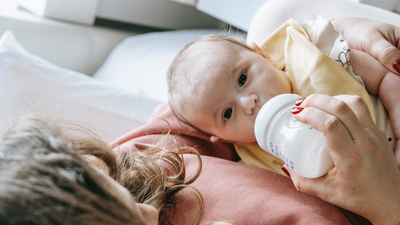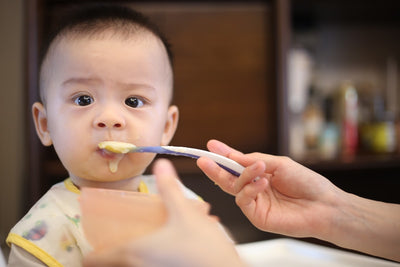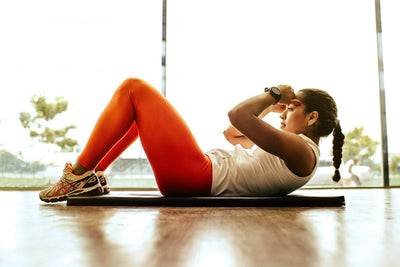5 Common Reasons For Breast Pain and Remedies
5 Common Reasons For Breast Pain and Remedies
by Jordan Berns
Everyone knows that “fed is best” is the leading policy from doctors. Both the breast and the bottle present advantages and disadvantages. Logging onto social media, it can seem like all your mom friends are breastfeeding with painless ease. But we know that when women choose to breastfeed, one of the disadvantages is possible breast and nipple pain. In fact, the number one reason women stop breastfeeding before six months postpartum is because of breast and nipple injuries. These injuries can come in many forms, but they can be very treatable.
Nipples and breasts have amazing super powers, but they also have their kryptonite. Here are some of the top five causes of breast and nipple pain, and how to stop them!
1. Plugged Ducts
Plugged ducts are incredibly uncomfortable and can contribute to infections, engorgement, and the formation of blebs (hard, white-head like dots on the nipple that block milk).
To remedy this pain at home, try wearing loose-fitting bras and clothes, latching in different positions to empty all parts of the breast, pumping, and hand expressing. Warm showers and warm compresses can help when followed by a gentle breast massage. To begin, take your hands and massage starting from the far side of the nipple going inwards to push the plugged duct clear. If you have a plugged duct, don’t stop nursing, as that can lead to engorgement.
Plugged ducts make it harder for your baby to nurse and may lead to mastitis. In some situations, galactoceles (milk-filled cysts) can form. Contact your doctor if you have a plugged duct that does not improve with home treatments after two days.
2. Engorgement
Engorgement is when the breast holds an excessive amount of milk, making it too full for babies to latch onto the nipple.
To relieve engorgement, try warm showers and warm compresses before nursing. You can also use your fingers to push the nipple into a better latch position for your baby. Be careful pumping, as this can actually encourage more milk production. Expressing milk can help too! It will make your areola soft enough for a better latch. Here’s how: Take your forefingers and your thumb, positioning them near your chest, far behind the areola. In a rhythmic fashion, press your fingers together in the direction of the nipple.
Breast injuries can be painful: how to stop them in their tracks!
3. Yeast Infections
Yeast infections can occur in the breast or nipple. Symptoms include breast pain, a history of vaginal yeast infections, babies who have thrush or diaper rash, and nipples with skin that flakes or shines. Your doctor may do a culture of your breast milk (if positive, Candida, a type of fungal infection, will be present). They can often tell by examining you, if there is a fungal infection.
Treatment options vary, as there’s still much to learn about yeast infections in the breast. Some physicians suggest gentian violet 0.25-1%. To apply, rub this purple medication in your baby’s mouth before nursing, being careful that the baby doesn’t swallow the messy ointment. When finished nursing, rub some on your nipple per your doctor’s instructions. It should be noted that gentian violet has been taken off the Canadian market due to safety concerns.
Some topical antifungals or antifungal pills can also be treatment options. Check with your doctor to make sure the medication is safe to take while breastfeeding.
4. Nipple Vasoconstriction
If you feel a burning, numbness, or pain in your nipples, especially if it’s triggered by the cold, you may have nipple vasoconstriction. This occurs when blood vessels tighten, stopping sufficient blood from getting to the nipple. Nipples may appear blue or white.
Help blood flow by making yourself as (comfortably) warm as you can. Put on warm clothes and breastfeed in a heated place. This condition can be aggravated with caffeine and nicotine.
5. Milk Oversupply
Milk oversupply is very common in a first pregnancy. Mothers with an oversupply of milk can often have over or underweight babies. Milk oversupply can lead to underweight babies because they aren’t drinking the fat-rich milk that comes at the end of a typical feed.
To combat this issue, try breastfeeding with your baby positioned upright while you lay on your side or angle backwards. You can minimize leaking by applying ice or very cold water to the nipples. Allow babies to take breaks while feeding, burping them frequently. It is best not to pump, but expressing a little milk at the beginning of the feed can help. If you place your fingers in a scissor shape, you can hold onto the areola to restrict the milk’s movement. You can also use the heel of your hand to push your breast inwards to slow the milk’s flow.
Breastfeeding doesn’t have to hurt: Learn the at home techniques to fight the pain.
Your breasts work so hard; they deserve all the love they can get! Take care of them by delicately washing them with gentle soaps, using breast pads that do not have plastic backings, and allowing your nipples to air-dry after nursing.
Other ways to minimize breast and nipple pain are to use cool and warm compresses (avoid ice) and always start nursing with the breast that hurts the least. You can place expressed breast milk on injured nipples or Lanolin (if you’re not allergic). After applying, place a nonstick pad over the nipple to prevent it from being irritated by your bra. It is crucial to never put Vitamin E on your nipples, which in high dosages is toxic to nursing babies. You may also take over-the-counter pain relievers like Advil, Motrin, and Tylenol.
There are a number of services to help women overcome breast pain. Telehealth Consultations at Lactation Lab are available with doctors, lactation consultants, and dietitians here to minimize pain and maximize information. Breast and nipple pain can be distressing, but with the right pain management tools, nursing can be comfortable and rewarding.












